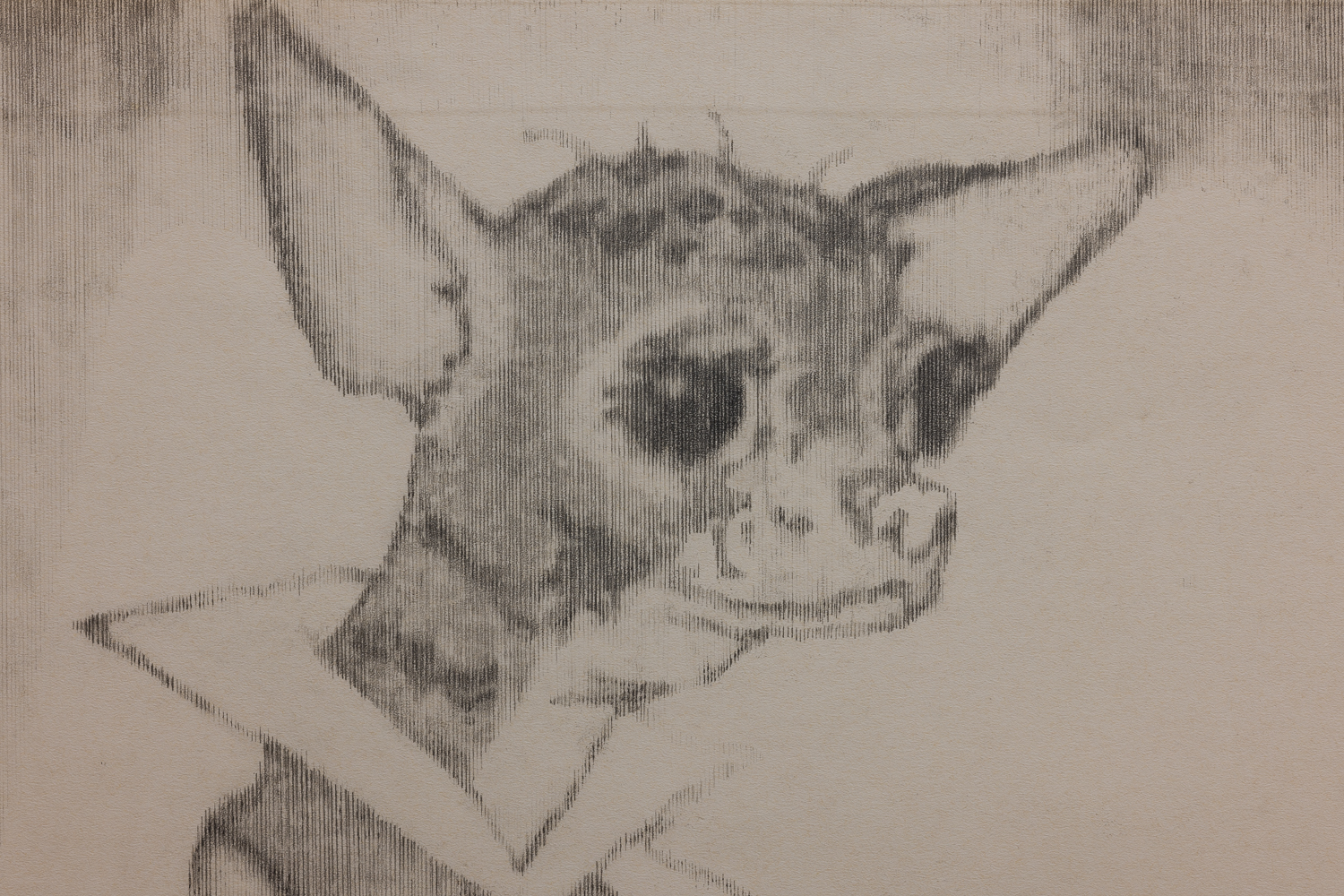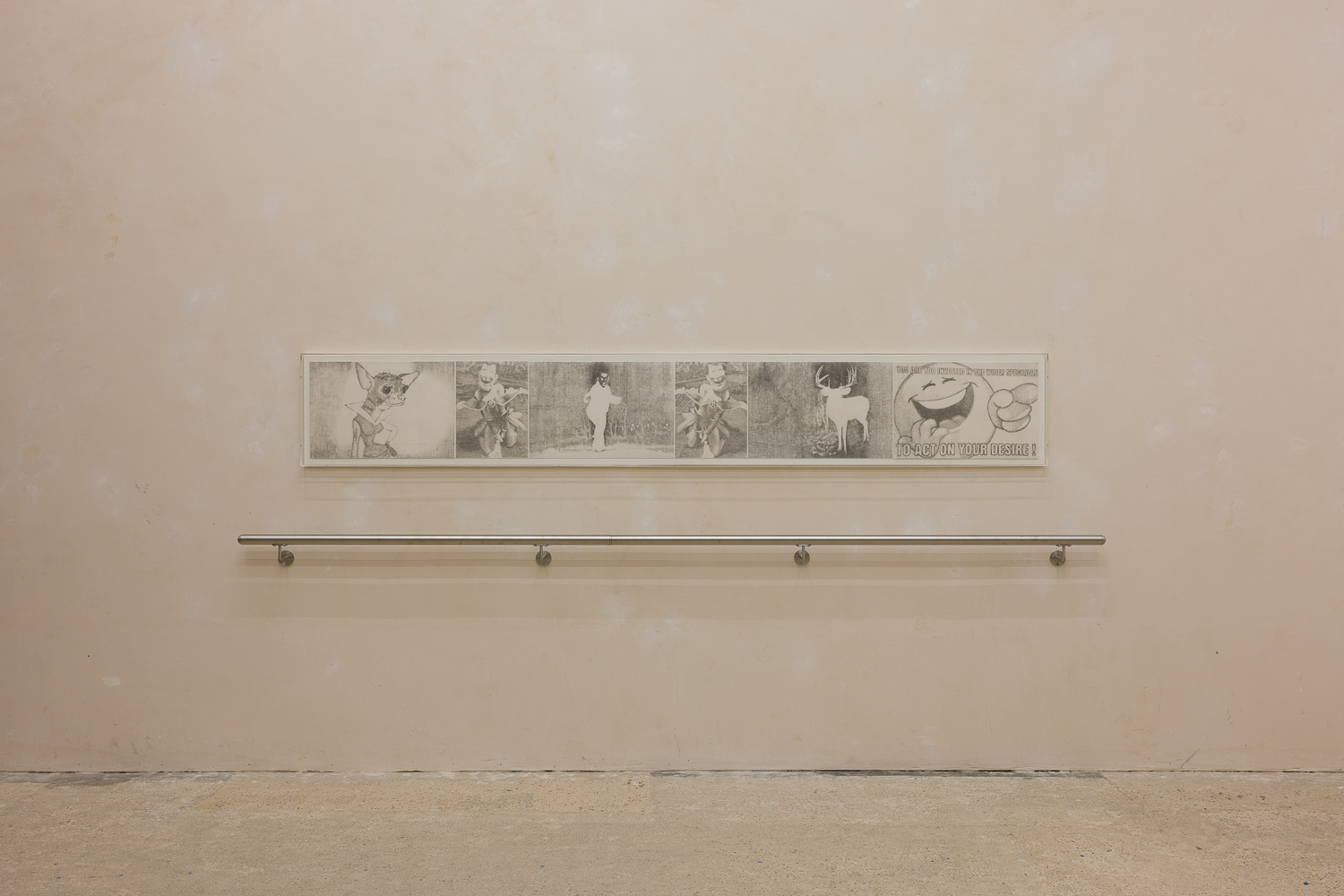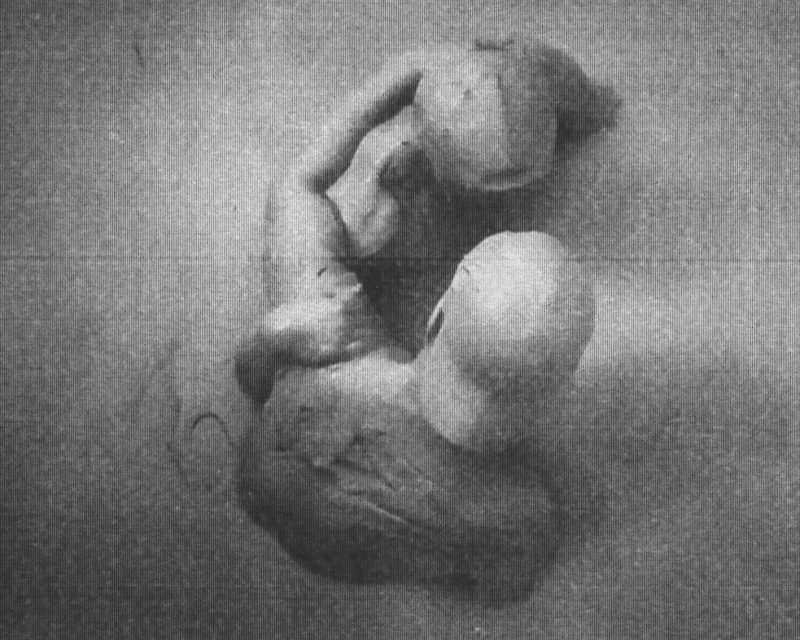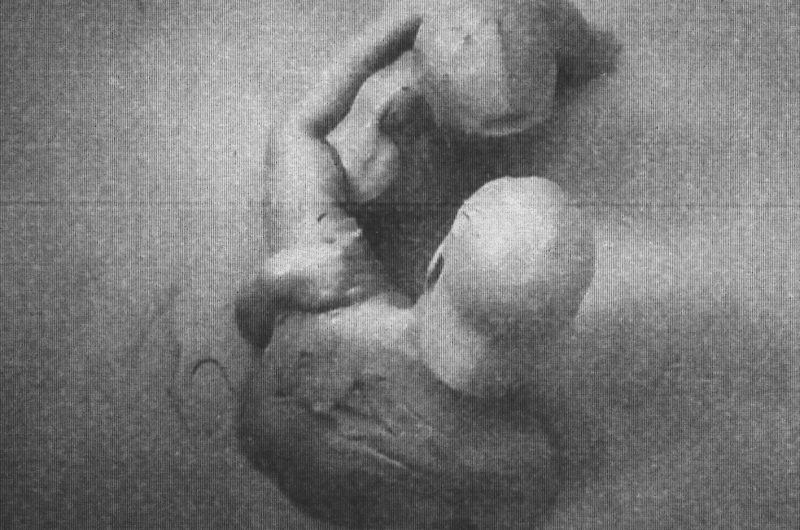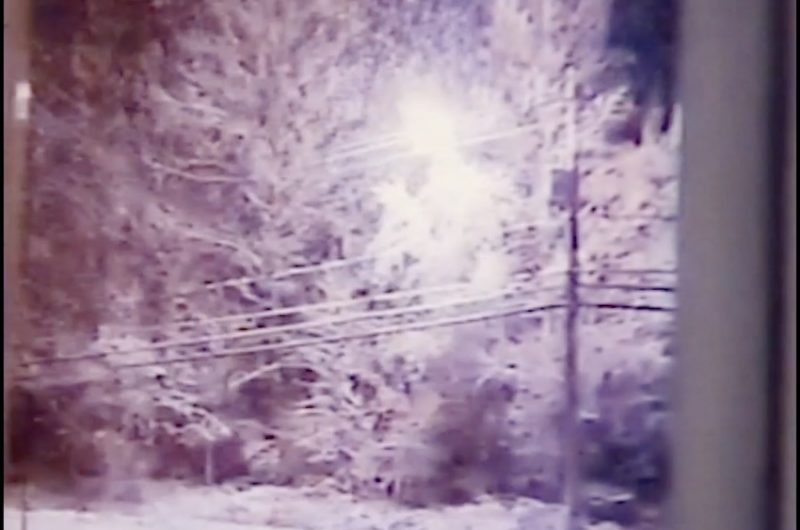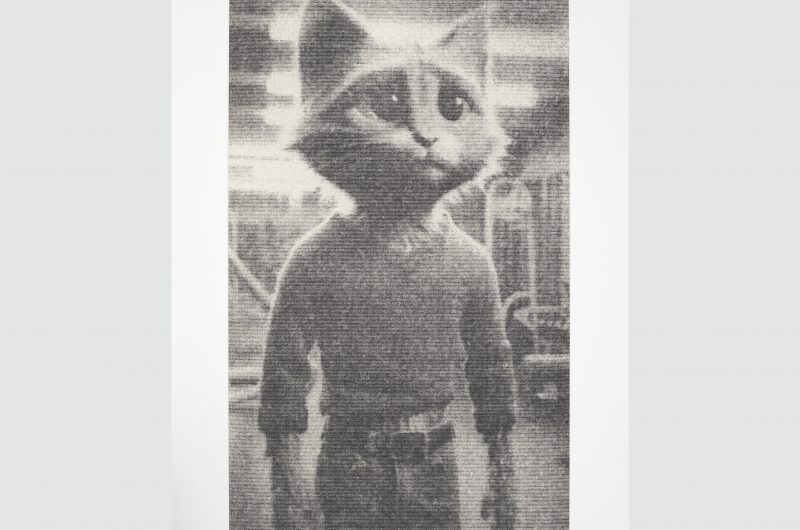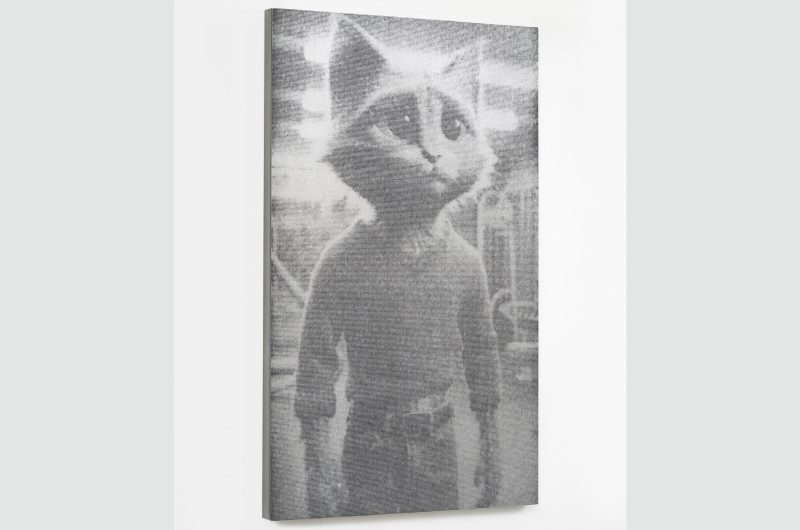EPISODE 13: LAILA MAJID & LOUIS BLUE NEWBY
Inner Heat
Opening event: Thursday 07 Nov, 6–9pm.
Goldsmiths CCA presents the first institutional exhibition by artist duo Louis Blue Newby and Laila Majid. Inner Heat places a series of new drawings into conversation with sculptural elements of public infrastructure, examining the dynamic between private image consumption and the public realm.
Both solo practising artists, Newby and Majid’s shared practice has evolved, from a constant exchange of found imagery, gathered to create an archive of printed and digital material in what has become an instinctive shared language. Fluidly moving between mediums, their work has reconfigured visuals scraped from sources such as online forums, social feeds, subreddits and Pornhub. Developed via mediation and presented through a distorting lens – at times overlaying constellations of images with translucent resin, cast from leather to look like skin (Spread, 2022-ongoing); at others, using 16mm film to capture a screen showing a sequence of amorphous AI generated samples (south florida sky, 2022) – their work coaxes distance between audience and image, and in doing so gestures to an alternate style of image consumption: one in which the passive is made intimate and active.
At the centre of Inner Heat is the Contact series. A departure from Newby and Majid’s previous manipulation of images found largely in printed source materials like magazines, manuals, comics and books, Contact is derived entirely from found digital images, painstakingly translated into drawings. Archetypes of a collectively understood memetic internet culture, there is an immediacy to the source images. Contact (Forum) is a work composed of 6 drawings, their respective images taken from indeterminate sources. Decontextualized from the social media feeds where they were found, the figures in this work become resonant for the transformative and subversive quality of their content, and the severe austerity of the work’s formal format. Each image can be read as deviant, tracing gender fluidity, non-normative sexual practices, or anthropomorphic transformation. Another set of images shows figures stuck in mud, a literal metaphor for the stickiness and muddiness of the images that hold Majid and Newby’s attention.
The physicality of the production process adds a temporal aspect to Newby and Majid’s visual language of mediation. In opposition to the levity and accessibility of their ‘throw away’ source imagery, Contact works are slowly and painstakingly produced in graphite on paper. Photographing each image using low resolution digital thermal transfer printing generates an imperceptible linear structure; a grid that is only visible when the image is enlarged and reprinted. Embodying the idea of reading images through touch, the artists reproduce the thousands of data-loaded strips by hand, a laborious mechanical process which removes traces of individual artists’ identity from the artwork’s production.
The effect of the process of erasure and recreation of the lines that constitute the image is an analogue texture that emulates a grain. Simultaneously soft and sharp, the instability of the image created by this textural materiality is redolent of the unknowable journey of the image from its original producer. The time intensive manual photocopying process requires close contact with the work for an extended period of time; through this punishing intimacy the artists question how we engage with imagery in the first place – how can we truly read, process and be with images?
If the raw images used in the Contact drawings instantly feel familiar, the fine mediated texture of the lines of each drawing has the effect of withholding information from the viewer at first glance. This sense of both knowing and not knowing is furthered by taking not only images from the public realm, but elements of infrastructure often found in public space. The metal perch benches proffer rest at a detriment to privacy. Set too close together for comfort, and designed for perching rather than relaxing, the discomfiting intimacy instigated by the installation subverts the dynamic between viewer and object. The handrails under the wall-based works limit proximity to the drawings. By installing the Contact drawings in this way, the artists explore what Michael Taussig defines as “a nervous system poetics of concealment and revelation”, instigating a current of push and pull within the space; an explosive tension that simmers with its own “inner heat”. Stemming from an overarching interest and need in sharing all types of images with each other for inspiration, artist duo Laila Majid and Louis Blue Newby have created a rich archive of found images over the years. Strongly interested and inspired by fetish and leather subcultures as well as body modification, they create collages from found erotic images. In their work, an underground activity of non-normative images occurs: images are printed and overlaid with drawings and words on greased paper. All compositions are finally encased in resin casts of transparent fur and leather, thus leading us to reflect on the consumption and circulation of images.
BIOS
Laila Majid (b.1996) was born in Abu Dhabi and lives and works in London. Previous solo exhibitions include Sherbet Green & Harlesden High Street, London, UK (2023); Rose Easton, London, UK (2022). Selected group exhibitions include SET Woolwich, London, UK (2023); Austrian Cultural Forum, London, UK (2022), Paradise Row, London, UK (2022), Ridley Road Project Space, London, UK (2021), Bloomberg New Contemporaries, South London Gallery, London, UK (2021).
Louis Blue Newby (b.1996) was born in London and lives and works in the same city. Previous solo exhibitions include Soft Opening, London, UK (2023); Xxijra Hii, London, UK (2022); San Mei, London, UK (2022); Transition Two, London, UK (2020); springseason, London, UK (2019). Selected group exhibitions include Shtager&Shch, London, UK (2023); Tanners Hill, London, UK (2023); SET Woolwich, London, UK (2023); Sherbet Green, London, UK (2022); Collective Ending HQ, London, UK (2022); Bloomberg New Contemporaries, South London Gallery, London, UK (2019).
Previous solo exhibitions of the artist duo include Xxjira Hii takeover at Sadie Coles HQ, London, UK (2023); Xxijra Hi, London, UK (2022); San Mei Gallery, London, UK (2022); springseason, London, UK (2020); Transition Two, London, UK (2019). Selected group exhibitions include General Assembly, London, UK (2024); Kupfer Gallery, London, UK (2023); San Mei Gallery, London, UK (2022); Paradise Row, London, UK (2022). The duo has been awarded with the Circa x Dazed Class (2022), and the OMNI Artist Award (2021).
EPISODES
Episodes is an ongoing series of solo presentations that cuts through the main programming at Goldsmiths CCA and provides a counterpoint to the larger-scale exhibitions. Spanning installations, screenings, publications, discursive events and new commissions, the focus of this programme is to provide an experimental platform for emergent practices.
Opening event: Thursday 07 Nov, 6–9pm.
Goldsmiths CCA presents the first institutional exhibition by artist duo Louis Blue Newby and Laila Majid. Inner Heat places a series of new drawings into conversation with sculptural elements of public infrastructure, examining the dynamic between private image consumption and the public realm.
Both solo practising artists, Newby and Majid’s shared practice has evolved, from a constant exchange of found imagery, gathered to create an archive of printed and digital material in what has become an instinctive shared language. Fluidly moving between mediums, their work has reconfigured visuals scraped from sources such as online forums, social feeds, subreddits and Pornhub. Developed via mediation and presented through a distorting lens – at times overlaying constellations of images with translucent resin, cast from leather to look like skin (Spread, 2022-ongoing); at others, using 16mm film to capture a screen showing a sequence of amorphous AI generated samples (south florida sky, 2022) – their work coaxes distance between audience and image, and in doing so gestures to an alternate style of image consumption: one in which the passive is made intimate and active.
At the centre of Inner Heat is the Contact series. A departure from Newby and Majid’s previous manipulation of images found largely in printed source materials like magazines, manuals, comics and books, Contact is derived entirely from found digital images, painstakingly translated into drawings. Archetypes of a collectively understood memetic internet culture, there is an immediacy to the source images. Contact (Forum) is a work composed of 6 drawings, their respective images taken from indeterminate sources. Decontextualized from the social media feeds where they were found, the figures in this work become resonant for the transformative and subversive quality of their content, and the severe austerity of the work’s formal format. Each image can be read as deviant, tracing gender fluidity, non-normative sexual practices, or anthropomorphic transformation. Another set of images shows figures stuck in mud, a literal metaphor for the stickiness and muddiness of the images that hold Majid and Newby’s attention.
The physicality of the production process adds a temporal aspect to Newby and Majid’s visual language of mediation. In opposition to the levity and accessibility of their ‘throw away’ source imagery, Contact works are slowly and painstakingly produced in graphite on paper. Photographing each image using low resolution digital thermal transfer printing generates an imperceptible linear structure; a grid that is only visible when the image is enlarged and reprinted. Embodying the idea of reading images through touch, the artists reproduce the thousands of data-loaded strips by hand, a laborious mechanical process which removes traces of individual artists’ identity from the artwork’s production.
The effect of the process of erasure and recreation of the lines that constitute the image is an analogue texture that emulates a grain. Simultaneously soft and sharp, the instability of the image created by this textural materiality is redolent of the unknowable journey of the image from its original producer. The time intensive manual photocopying process requires close contact with the work for an extended period of time; through this punishing intimacy the artists question how we engage with imagery in the first place – how can we truly read, process and be with images?
If the raw images used in the Contact drawings instantly feel familiar, the fine mediated texture of the lines of each drawing has the effect of withholding information from the viewer at first glance. This sense of both knowing and not knowing is furthered by taking not only images from the public realm, but elements of infrastructure often found in public space. The metal perch benches proffer rest at a detriment to privacy. Set too close together for comfort, and designed for perching rather than relaxing, the discomfiting intimacy instigated by the installation subverts the dynamic between viewer and object. The handrails under the wall-based works limit proximity to the drawings. By installing the Contact drawings in this way, the artists explore what Michael Taussig defines as “a nervous system poetics of concealment and revelation”, instigating a current of push and pull within the space; an explosive tension that simmers with its own “inner heat”. Stemming from an overarching interest and need in sharing all types of images with each other for inspiration, artist duo Laila Majid and Louis Blue Newby have created a rich archive of found images over the years. Strongly interested and inspired by fetish and leather subcultures as well as body modification, they create collages from found erotic images. In their work, an underground activity of non-normative images occurs: images are printed and overlaid with drawings and words on greased paper. All compositions are finally encased in resin casts of transparent fur and leather, thus leading us to reflect on the consumption and circulation of images.
BIOS
Laila Majid (b.1996) was born in Abu Dhabi and lives and works in London. Previous solo exhibitions include Sherbet Green & Harlesden High Street, London, UK (2023); Rose Easton, London, UK (2022). Selected group exhibitions include SET Woolwich, London, UK (2023); Austrian Cultural Forum, London, UK (2022), Paradise Row, London, UK (2022), Ridley Road Project Space, London, UK (2021), Bloomberg New Contemporaries, South London Gallery, London, UK (2021).
Louis Blue Newby (b.1996) was born in London and lives and works in the same city. Previous solo exhibitions include Soft Opening, London, UK (2023); Xxijra Hii, London, UK (2022); San Mei, London, UK (2022); Transition Two, London, UK (2020); springseason, London, UK (2019). Selected group exhibitions include Shtager&Shch, London, UK (2023); Tanners Hill, London, UK (2023); SET Woolwich, London, UK (2023); Sherbet Green, London, UK (2022); Collective Ending HQ, London, UK (2022); Bloomberg New Contemporaries, South London Gallery, London, UK (2019).
Previous solo exhibitions of the artist duo include Xxjira Hii takeover at Sadie Coles HQ, London, UK (2023); Xxijra Hi, London, UK (2022); San Mei Gallery, London, UK (2022); springseason, London, UK (2020); Transition Two, London, UK (2019). Selected group exhibitions include General Assembly, London, UK (2024); Kupfer Gallery, London, UK (2023); San Mei Gallery, London, UK (2022); Paradise Row, London, UK (2022). The duo has been awarded with the Circa x Dazed Class (2022), and the OMNI Artist Award (2021).
EPISODES
Episodes is an ongoing series of solo presentations that cuts through the main programming at Goldsmiths CCA and provides a counterpoint to the larger-scale exhibitions. Spanning installations, screenings, publications, discursive events and new commissions, the focus of this programme is to provide an experimental platform for emergent practices.
Read Less...
